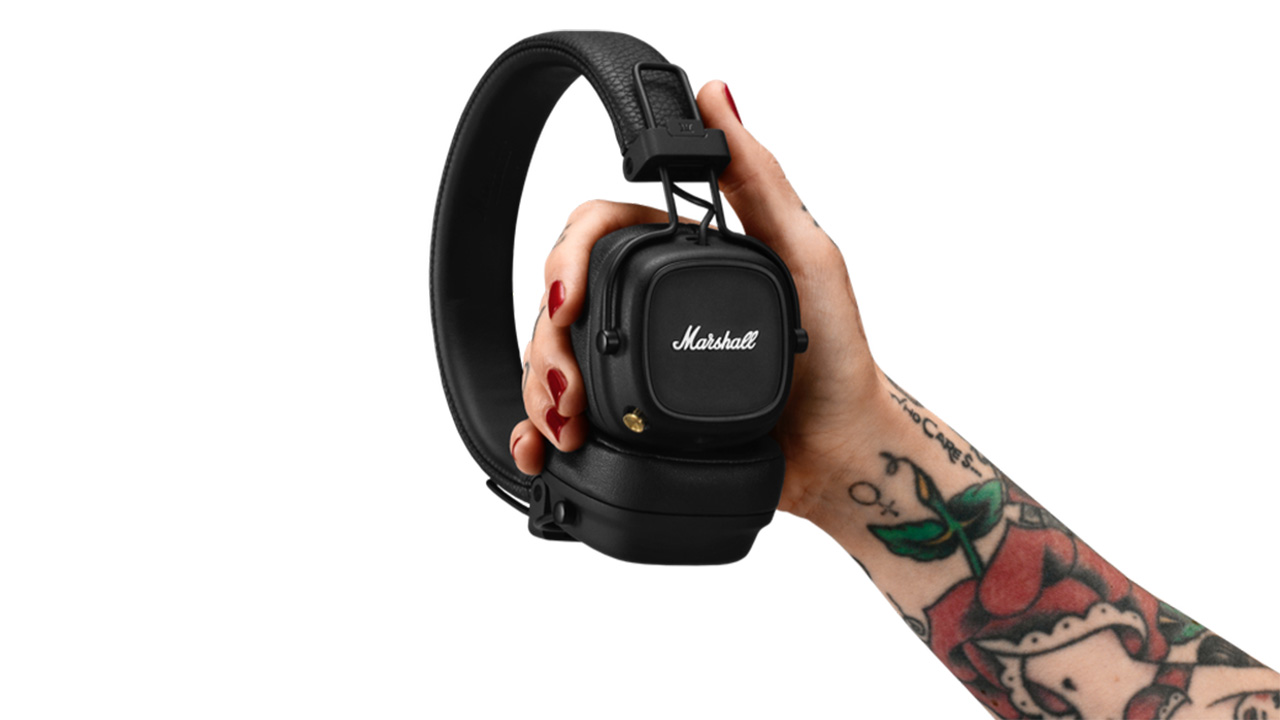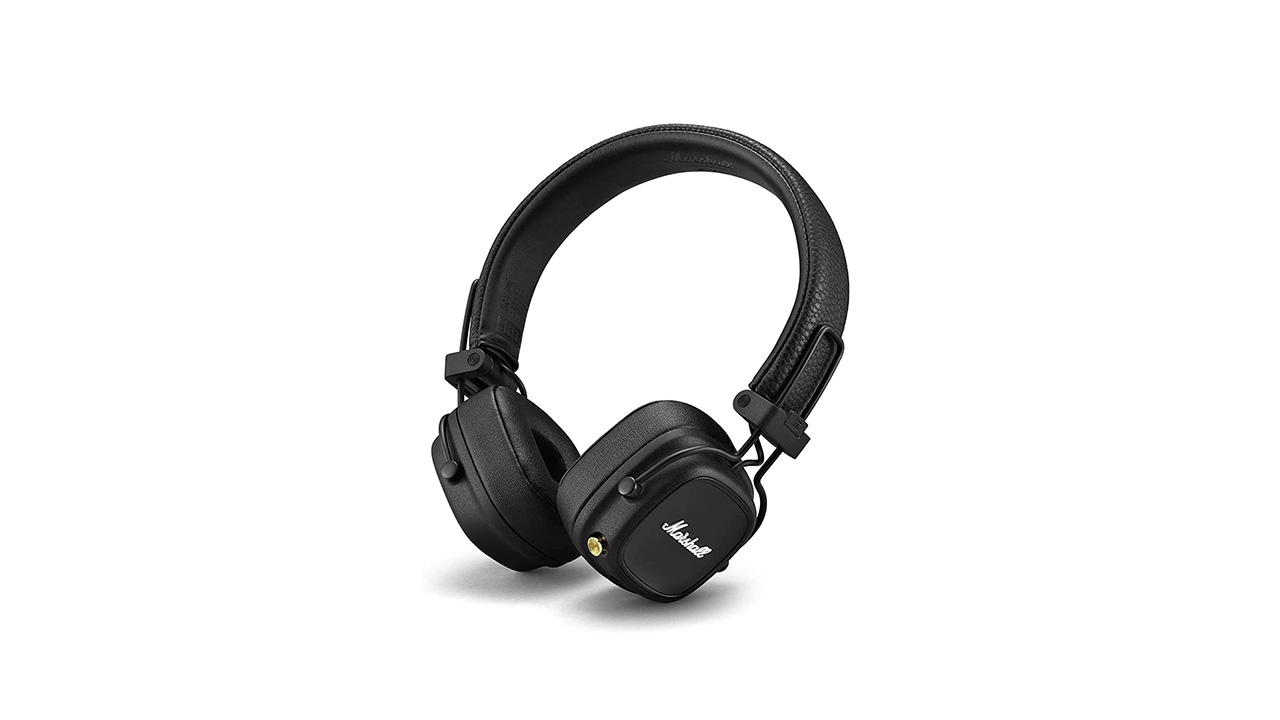The Marshall Major IVs are unpretentious wireless Bluetooth on-ear headphones that combine the brand’s signature amplifier aesthetic, all knurled finish, black metal hinges and iconic script logo, with heavy duty battery life and analogue usability.
They’re essentially an update on the Marshall Major III, led by a massive power reserve: 80 hours on a full charge, made possible by the fact they run economic Bluetooth v5.0 and don’t have the drain caused by ANC (Active Noise Cancelling).
They’re also on the right side of affordable, typically selling for around $149/£129, making them a great pair of budget wireless headphones and they look rugged enough to spend a lifetime on the road.
Marshall Major IV review: Design
Available in classic black and festival mud brown with a tan strap, it’s easy to love the look of the Marshall Major IV. They’re classic Marshall, with a matte finish and white script branding proudly visible. The headband is textured, holding ear cups in place with black metal hinges. The ear pads have been tweaked from the Major’s previous iteration for greater comfort, and they’re soft enough, although the headband itself is a little less generous when it comes to padding.
They’re also light, which makes them easy to sport for long periods. When you’re finished, the headphones fold down to a nicely manageable size, making them easy to stow in bags or backpacks.
The right cup offers a USB-C charging port, plus the multi-function control knob. Supplied accessories comprise a USB-C charging cable and 3.5mm stereo lead.
Marshall Major IV review: Features

Usability is refreshingly tactile. Rather than rely on touch sensitive control, the brand has stuck with its classic, multidirectional control knob for volume and navigation - play, pause and skip. You can also use the knob to take calls. Just don’t try and call up Siri of Alexa, because they’re not listening.
On the right ear cup there’s also a 3.5mm mini jack, which means that when your battery fails, you can hardwire and keep on listening. Alternatively, you can also share your music with a chum, if they want to hook-up their headphones while you stay wireless; the jack also makes these headphones usable with in-flight entertainment devices, just remember to pack that weird two-prong adapter.
The Marshall Major IVs are also compatible with wireless charging pads. Just pop the headphones on a pad (not supplied) for 15 minutes and you’ll pocket 15 hours of playtime. It’s a fair trade. The headphones ship with a USB C cable for more conventional charging.
Marshall Major IV review: Sound
The Marshall Major IVs are full of sonic surprises. The kick drum beat of I Wanna be your Slave, the Måneskin Iggy Pop team-up, is hard and forceful; these Marshall’s wallop louder than you might imagine for modestly sized over-ears (in fact, they’re one of our picks in our loudest headphones guide). Such bass profundity is a clear point of difference between these Bluetooth headphones and, say, the Sennheiser 350 BT.
This ability to hammer hard isn’t at the expense of dynamics either. The squealy feedback that signals Pop Evil's Let The Chaos Reign, is rightly clean and piercing. And of course, there’s the guitar tonality that Marshall always gets so right - Pop Evil’s riffing power chords churn like angry surf on these cans.
At times the Marshall Major IV’s bass weight threatens to overwhelm - there are points in Comin’ Home from Kiss' MTV Unplugged, when the balance goes awry, but you’re never more than a chorus away from a pitch perfect mid-range. Paul Stanley’s dialled back vocal on this track is full of nuance and musicality here, and the jangly guitars that back him sound sweet and shiny.
Both the hard hitting bass, and the melodious mid-range can be attributed to the 40mm custom-tuned dynamic drivers used within. Sensitivity is rated at 99dB SPL.
There’s also decent spatial imaging to be had. The opening chords of Helloween's Fear Of The Fallen are placed wide, leaving plenty of room for the band’s multiple vocalists to jostle for position. Any fears that these headphones may sound overly confined, prove unfounded.

